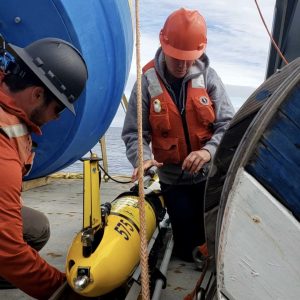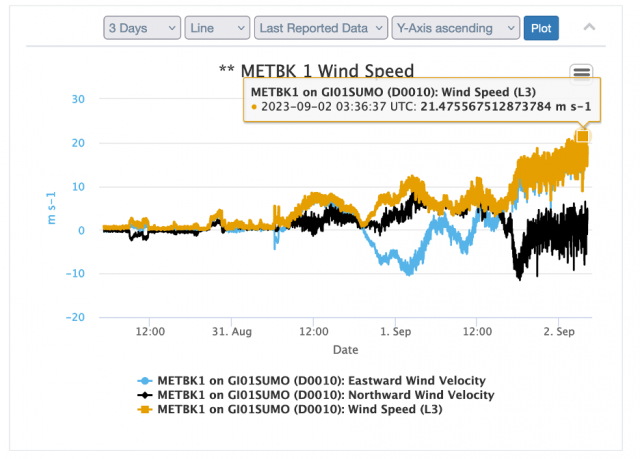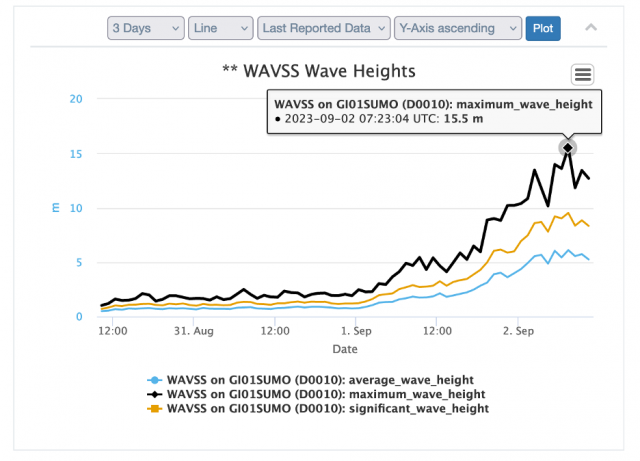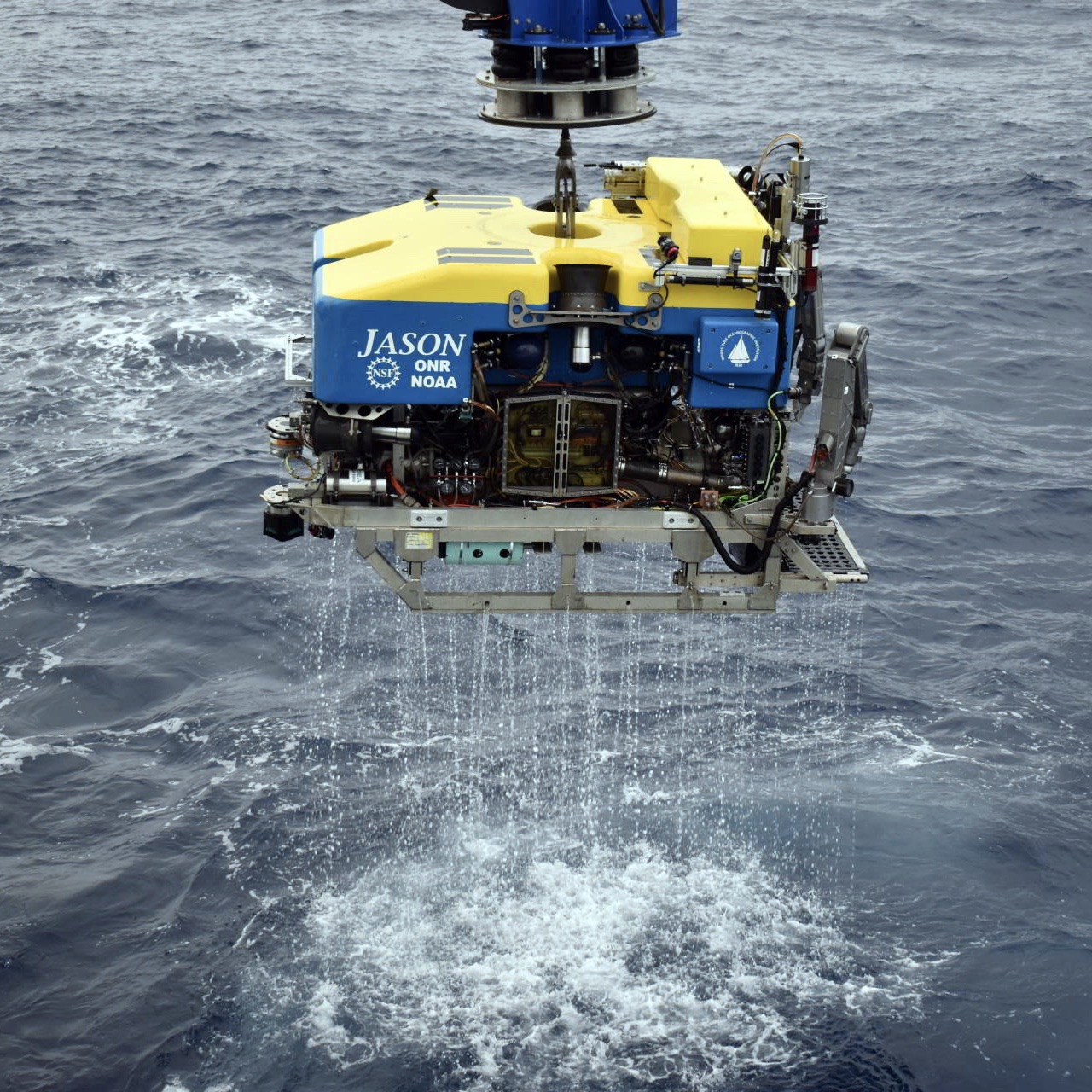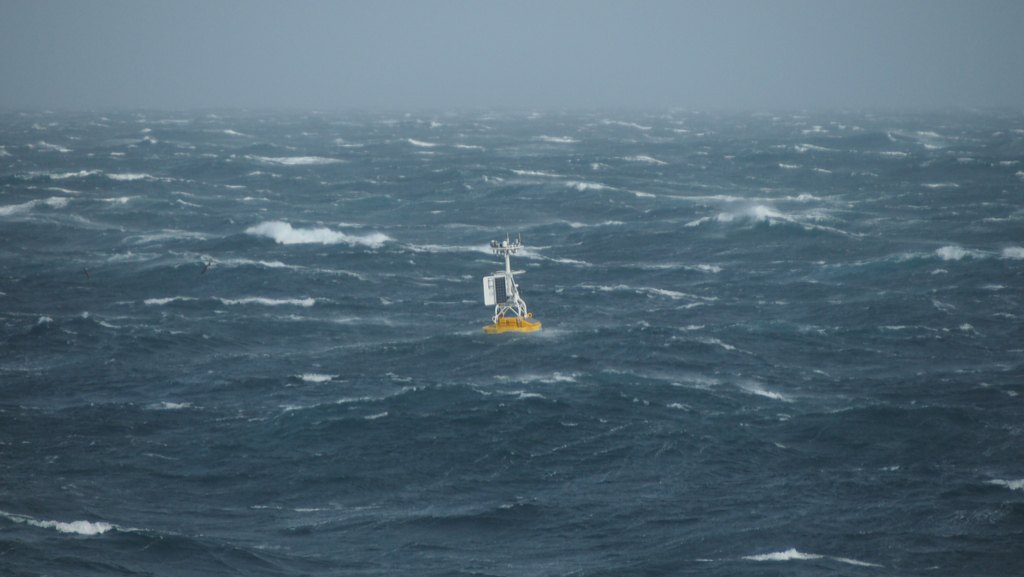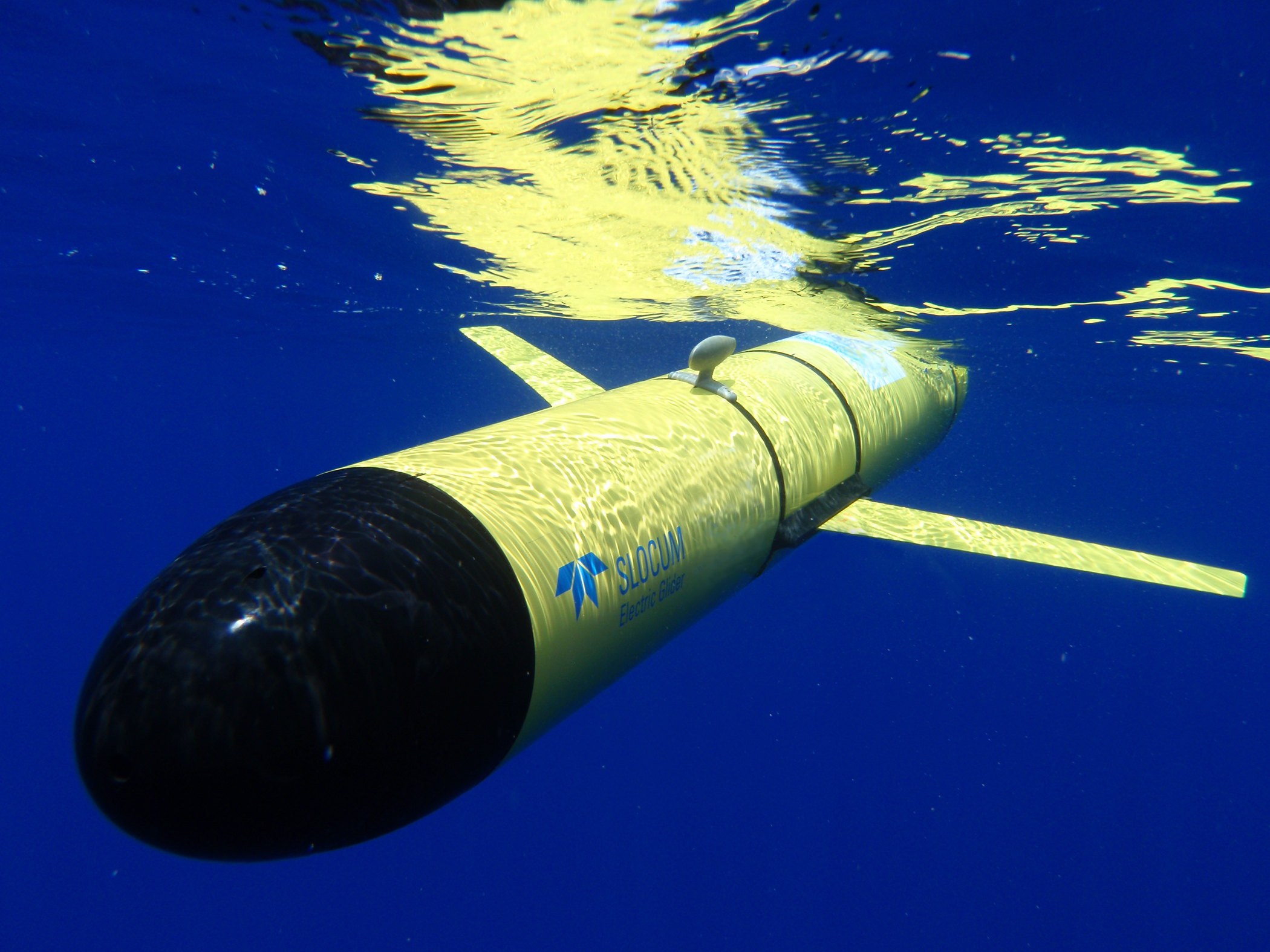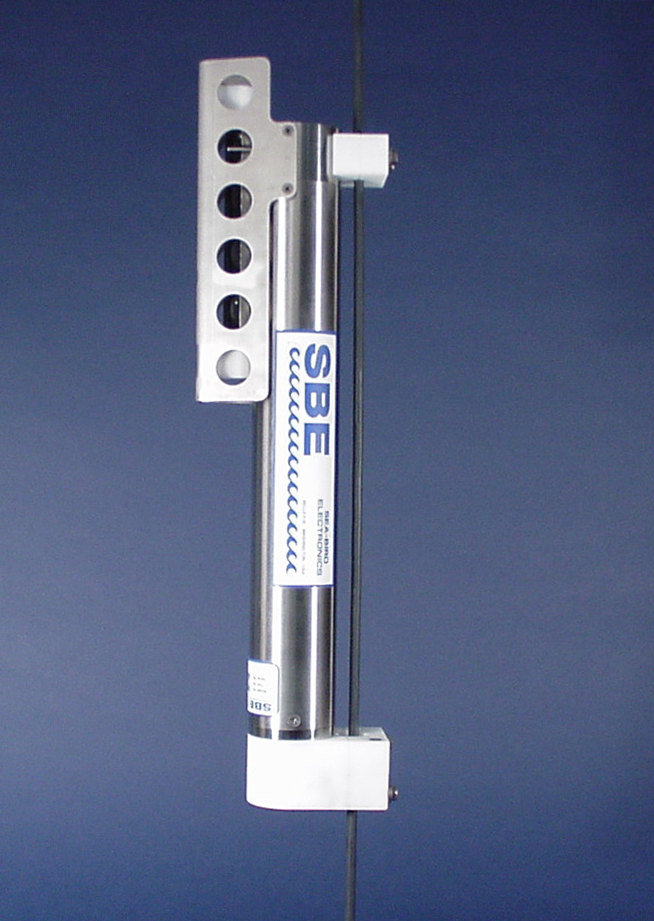How to Access Data
Jupyter Hub Town Hall: March 6, 1 pm ET
Curious about Jupyter Hub, which gives users access to computational environments and resources in their own workspaces on shared resources?
OOI is hosting a virtual town hall on Wednesday March 6, 2024 at 1 pm Eastern, where you can learn how researchers and educators are using OOI’s Jupyter Hub in their research and classrooms. During this one-hour town hall, OOI Data Lead Jeffrey Glatstein, OOIFB Chair and Queens College Assistant Professor Dax Soule, and OOI Data Expert Stace Beaulieu will give hands-on demonstrations of OOI Jupyter Hub. The emphasis will be on practical applications of this important resource, with plenty of time to ask questions.
Mark your calendar! Register to add this important resource to your repertoire.
- Date: Wednesday March 6, 20224
- Time: 1-2 pm Eastern
- Location: Zoom Webinar
- Register here.
Read More
Mission Accomplished Despite High Seas, Strong Winds
The Irminger 10 Recovery and Deployment Expedition had to keep a close eye on weather conditions. After arriving at the Irminger Sea Array site aboard the R/V Neil Armstrong, the ship was forced to take shelter in Prince Christian Sound off Greenland for two days to avoid 21.5 m/s (42 knot) winds and waves measuring more than 15.5 meters high (50 feet) as measured by the OOI Surface buoy (SUMO-10) meteorological systems.
[media-caption path="https://oceanobservatories.org/wp-content/uploads/2023/09/Screenshot-2023-09-07-at-10.18.07-AM.png" link="#"]On September 1, the R/V Neil Armstrong took refuge in Prince Christian Sound to avoid high winds and heavy seas that prevented safe deployment and recovery of the OOI moorings. The weather forecast called for 70 knot wind gusts and 30-foot waves at the work site![/media-caption]The team returned to the site once conditions settled down enough to work safely. The team monitored the weather carefully planning operations that fit the varying conditions and were able to squeeze out enough safe, workable days to accomplish the cruise’s primary objectives, and then some.
[media-caption path="https://oceanobservatories.org/wp-content/uploads/2023/09/global-surface-mooring.jpg" link="#"]The recovered global surface mooring was successfully brought onboard, secured, and ready for the long trip home. Credit: John Lund © WHOI.[/media-caption]The ship departed the Irminger Array on September 12th and headed for the last CTD (Conductivity, Temperature, and Depth) measurement at OSNAP Station M4 on the way home to Woods Hole, MA, which completed the cruise objectives. Despite the obstacles posed by conditions in this windy and wild part of the norther Atlantic, four moorings were deployed and recovered. Two open ocean gliders and one global profiling glider were deployed. CTD casts for instrument cross calibration were made during each deployment/recovery. Meteorological surveys were conducted and ancillary CTD casts to support the OSNAP program were made. In addition, a significant number of marine mammal sightings were recorded.
Conditions didn’t cooperate as the team headed home. The Captain of the Armstrong had to carefully pick a transit to avoid Hurricanes Lee and Margot turning up the Atlantic.
Said Chief Scientist John Lund, “The success of this cruise is a result of the tremendous teamwork from the Armstrong crew, shoreside support, and the OOI and CRL engineers and technicians who prepared and deployed the Irminger-10 assets. Their hard work has made possible the data that will be sent home for the next year.”
The ship and its hard-working team are expected to arrive back at the Woods Hole dock on September 21. More details about the expedition and images and video are available here.
Read More
Mission Complete: 23 Days at Sea
By Darlene Trew Crist and Debbie Kelley
23 days at sea.1200 miles of transit. 44 ROV Jason Dives. Over 80,000 lbs of equipment mobilized. Turned, deployed or recovered 225 pieces of infrastructure on the seafloor and in the water column. More than 500 hours of continuous livestreaming video from ship to shore through a satellite 22,000 miles overhead, and daily updates of cruise activities.
These numbers provide only a glimpse of what was accomplished by a team of scientists and engineers from the University of Washington (UW), pilots of the ROV Jason from Woods Hole Oceanographic Institution, and the captain and the crew of the R/V Thomas G. Thompson, during a nearly month-long expedition in the northeast Pacific Ocean to maintain OOI’s Regional Cabled Array (RCA), operated and maintained by UW. After a mandatory two-week quarantine, the scientific party departed aboard the R/V Thompson from Newport, Oregon on 1 August to begin the journey to replace and install equipment on the array. The ship returned to Newport on 13 August to offload the recovered equipment and load a new supply for the second Leg, which left on 15 August, finally returning to port on 26 August.
Funded by the National Science Foundation (NSF), the cruise was highly complex, involving a diverse array of ~109 Core instruments, three junction boxes, two Benthic Experiment Platforms, six instrumented pods on the Shallow Profiler Moorings, which were recovered and installed, and three Deep Profiler vehicles, which were turned. In addition, six instruments conducting scientific experiments for principal investigators external to OOI were recovered, one was installed and another turned.
While the overall mission was clear, the cruise plan remained flexible to allow the Chief Scientists to modify operations, as needed, depending upon weather conditions. The expedition traveled to all of the RCA sites — Slope Base, Oregon Offshore, Oregon Shelf, Southern Hydrate Ridge, and Axial Base and Axial Caldera, with multiple 22-hour transits to Axial Seamount.
[media-caption type="image" class="external" path="https://oceanobservatories.org/wp-content/uploads/2020/09/Regional-Cabled-Array.-.jpg" alt="Regional Cabled Array" link="#"]Location of RCA infrastructure showing installed backbone cable (solid lines), extension opportunities (dashed lines) Primary Nodes (red boxes), cabled moorings (green dots), and Endurance uncabled moorings (yellow dots). Credit: University of Washington.[/media-caption]All Objectives Completed on Leg One
All instrument and platform installations scheduled for Leg 1 were completed by mid-day on 12 August during 26 dives. Six instrumented platforms on the Shallow Profiler Moorings and three instrumented Deep Profiler vehicles were turned, two junction boxes and over 80 instruments recovered and reinstalled.
Taking advantage of the good weather and the early completion of anticipated tasks, the RCA team transited to the Endurance Shelf site (80 meters), where they recovered several cabled platforms and instruments that were planned for Leg 2 of the expedition. Again, taking advantage of ideal visibility at the seafloor there, the RCA team performed three Jason dives, successfully recovering the Zooplankton Sonar, the Benthic Experiment Package (BEP), and a digital still camera.
After the completion of these dives, the R/V Thomas G.Thompson headed back to shore. The ship arrived at the NOAA Marine Operations Center-Pacific dock in Newport, Oregon on 13 August and began mobilization/demobilization for the changeover from Leg 1 to Leg 2 of the cruise.
[media-caption type="image" class="external" path="https://oceanobservatories.org/wp-content/uploads/2020/09/Combined-picture-RCA.jpg" alt="Combined picture" link="#"]Deploying the new Deep Profiler vehicle at Slope Base on 11 August (left) Credit: M. Elend, University of Washington, V20.; Recovering the Benthic Experiment Package (BEP) at the Endurance Shelf site (right): Credit: UW/NSF-OOI/WHOI.V20.[/media-caption] [media-caption type="image" class="external" path="https://oceanobservatories.org/wp-content/uploads/2020/09/Combined-2.jpg" alt="Combined 2" link="#"]R/V Thomas G. Thompson, Leg 1 Demobilization / Leg 2 Mobilization of two BEPs, a Zooplankton sonar platform, and platforms to be installed at Axial Seamount Credit: University of Washington, V20.[/media-caption]Weather Challenges on Leg Two
The ship departed from Newport again on 15 August and headed to the Endurance Array Oregon Shelf site to resume maintenance operations. There, the team deployed the cabled Zooplankton Sonar, however, installation of the BEP, which weighs over 3,000 lbs and is latched underneath Jason for installation and recovery, was postponed due to large swells.
The ship next transited over 300 miles offshore to Axial Seamount to complete the maintenance activities there. When the Thompson arrived at Axial, it successfully turned a secondary node at the Eastern Caldera site that provides power and bandwidth to a geophysical suite of instruments and now hosts a new CTD funded by NSF to Dr. W. Chadwick (one of three instruments for installation on the RCA as part of this award). It was a notable event because the junction box had been deployed on 22 July 2013 and had spent the last 2,583 days or 7.1 years in 1516 meters of water within Axial Caldera!
For the next eight days, cruise operations proceeded smoothly with intermittent weather delays. Even though weather was not completely cooperative, the team was able to complete a total of 14 dives during which they turned a BEP, two digital still cameras, two uncabled seafloor instruments, and a CTD. They also recovered three cabled instruments and an uncabled instrumented platform for principal investigators conducting research at Southern Hydrate Ridge. One dive was dedicated to an inspection and troubleshooting of Primary Node PN1B, which was offline.
Later in the cruise, weather put onboard activities on hold, however, a cohort of enthusiastic students onshore (due to COVID) virtually ‘visited’ the ship and Jason operations van as part of the NSF-funded STEMSEAS program, which provides at-sea experiences for undergraduates. The students had the opportunity to interact with Chief Scientist Brendan Philip, who completed his oceanography undergraduate and masters’ degree at the University of Washington, as well as a visit with two UW and Queens College undergraduate students sailing onboard as science aides as part of the UW VISIONS experiential learning program. They were also introduced to RCA engineers and members of the Jason team inside the control van.
[media-caption type="image" class="external" path="https://oceanobservatories.org/wp-content/uploads/2020/09/Katie_Steve_sm.Newport_20200815_111023_L2_start-copy-2-scaled.jpg" alt="Katie_Steve" link="#"]K. Gonzalez, UW Oceanography undergraduate, and S. Karaduzovic, Queens College undergraduate, gaze out into the NE Pacific as the R/V Thomas G. Thompson sails through the Yaquina Bay channel on its way to begin Leg 2 of the RCA expedition. Credit. M. Elend, University of Washington. V20.[/media-caption] [media-caption type="image" class="external" path="https://oceanobservatories.org/wp-content/uploads/2020/09/J1267_20200809_155656_THSPHA301_deploy-copy.jpg" alt="Screen" link="#"]Video, sonar, and navigation panels inside the ROV Jason control van as the team works nearly a mile beneath the oceans’ surface at the International District Hydrothermal Field atop Axial Seamount. Credit: University of Washington. V20.[/media-caption]With lessening swell heights, the team completed RCA maintenance tasks at Southern Hydrate Ridge. Additional efforts were focused on the recovery of a cabled multi-beam sonar and a 4K camera funded by Germany to Drs. Y. Marcon and G. Bohrmann, Bremen University, to quantify methane flux and turning of a CTD. In addition, a methane microbial fuel cell platform was recovered as part of an Office of Naval Research (ONR)-funded project to Dr. C. Reimers (Oregon State University)—sailing as a member of the Leg 2 shipboard party. Upon completion of instrumentation work at Southern Hydrate Ridge, the Thompson transited back to the Endurance Array Oregon Shelf site to complete the remaining maintenance task, the deployment of the cabled BEP.
During the latter part of the cruise, weather again impacted what the team was able to do, but the science team continued to improvise to utilize ship time as efficiently as possible. For example, when winds (>20 knots) and large swells in the Shelf Area prevented the team from deploying the final (heavy) BEP, Dr. Reimers used some of her remaining ONR-supported at-sea time to conduct a Jason dive in the region of the West Coast Rockfish Conservation Area to survey fish, invertebrates, seeps, and trawl marks along a downslope transect. These data will be useful for collaborative work between Oregon State University and the Oregon Department of Fish and Wildlife scientists in decision-making about the reopening of the region in 2020, after 19 years of being closed to bottom trawling.
When the weather cleared, the team performed its final maintenance task of the cruise. They deployed the cabled Shelf BEP in 80 meters of water, after which the ship headed back to Newport to reunite with friends and family after six weeks away. The expedition ended having met all objectives, in spite of the weather.
Unique Views of the Seafloor
The RCA expedition literally offered a “bird’s eye view” of seafloor life. Below is a collection of some of the activities conducted and life witnessed on the seafloor.
Crab-infested Primary Node
[media-caption type="image" class="external" path="https://oceanobservatories.org/wp-content/uploads/2020/09/News_Crabs_PN1B-use-sulis2_20200818202445--scaled.jpg" alt="News_Crabs" link="#"]The ROVJason inspects Primary Node PN1B. These 12,000 lb nodes and primary backbone cable were built and installed in 2014 through an award to L3MariPro. This large seafloor substation converts 10,000 volts to 374 volts, and 10 Gb/s bandwidth to be distributed to cabled platforms and instruments. Here, extension cables plugged inside the node with wet-mate connectors provide power and bandwidth to Southern Hydrate Ridge, and upstream to the Oregon Offshore and Shelf sites. Credit: UW/NSF-OOI/WHOI. V20.[/media-caption]Octopus Abound
[media-caption type="image" class="external" path="https://oceanobservatories.org/wp-content/uploads/2020/09/Octopus-on-the-seafloor.jpg" alt="Octopus on the seafloor" link="#"]Octopus on the seafloor at Endurance Array Oregon Offshore Site. Credit: UW/NSF-OOI/WHOI. V20.[/media-caption]Islands of Sea Life
[media-caption type="image" class="external" path="https://oceanobservatories.org/wp-content/uploads/2020/09/news_SHllow-Profier_Offshore_20200803_133613180.framegrab03-copy.jpg" alt="Shallow_Profiler" link="#"]The ROV Jason installs a refurbished instrumented platform onto the Shallow Profiler Mooring at the cabled Oregon Offshore site. The platform hosts a zooplankton sonar, and instruments that measure pH, dissolved CO2, salinity, temperature, and dissolved oxygen. The 12 ft-across large mooring platforms at 200 m depth stay in the water for several years and become islands inhabited by a wealth of sea life. Credit: UW/NSF-OOI/WHOI.V20.[/media-caption]Big Red
[media-caption type="image" class="external" path="https://oceanobservatories.org/wp-content/uploads/2020/09/Big_Red_Jelly_sm.sulis2_20200817205124-copy-2-scaled.jpg" alt="Big Red Jellyfish" link="#"]A “Big Red” jellyfish swam past the ROV Jason 68 miles offshore of Oregon. Credit; UW/NSF-OOI/WHOI.V20.[/media-caption]Methane Seeps
[media-caption type="image" class="external" path="https://oceanobservatories.org/wp-content/uploads/2020/09/News_Abundant-Life-SHR_good_sulis2_20200826014741-copy-2-scaled.jpg" alt="Abundant_Sea_Life" link="#"]The Regional Cabled Array team always enjoys dives to the methane seep site at the Southern Hydrate Ridge. It is rich in animals — e.g. red striped rockfish, lavender hagfish, crabs, spotted sole — that thrive among the carbonate blocks and adjacent to the seeps where methane streams from the seafloor. Credit: UW/NSF-OOI/WHOI.V20.[/media-caption]Axial Seamount Summit
[media-caption type="image" class="external" path="https://oceanobservatories.org/wp-content/uploads/2020/09/News_use_J2-1277_Great-Crab-collapse_sulis2_20200817132525-copy-scaled.jpg" alt="Spider Crab" link="#"]A spider crab explores a collapsed, frozen lava lake at the summit of Axial Seamount, an active underwater volcano 4970 ft beneath the oceans’ surface, which is poised to soon erupt. Credit: UW/NSF-OOI/WHOI.V20.[/media-caption]
Read More
Talented Seafloor Workhorse
Enjoy some amazing underwater footage of the work that takes place off the Oregon coast to bring scientists and educators a constant stream of data from the seafloor through the water column across the Juan de Fuca plate.
https://vimeo.com/412358105
[embed]http://iframe%20src=https://player.vimeo.com/video/412358105%20width=640%20height=360%20frameborder=0%20allow=autoplay;%20fullscreen%20allowfullscreen/iframe[/embed]https://vimeo.com/user110037220/download/412358105/01ffce7409
Read MoreSpring Endurance Cruise Canceled due to COVID-19
The spring 2020 OOI Endurance Operations and Management (O&M) turn cruise has been canceled due to travel and personnel restrictions imposed to stem the spread of the virus COVID-19. The 16-day cruise was set to depart on 31 March from Newport, Oregon aboard the R/V Sikuliaq to service the array off the Oregon and Washington coasts.
Jonathan Fram, Program Manager of the Endurance Array, explains in this EOS article some of the possible implications of the cancellation, which may range from some of the moorings losing power, to the gliders running out of batteries, to possibly missing the recording data documenting the coastal ocean’s transition from winter to spring.
The fall 2020 Endurance turn cruise (currently scheduled for September) is expected to take place.
Read MoreGliders 101
Rising and falling though the water column, tracing a saw-tooth path, gliders travel the ocean collecting data day and night, in fair seas and foul weather.
Read MoreCTD 101
The first thing a Mother may do when a child gets sick is reach for a thermometer out of the medicine cabinet. For decades this simple instrument has provided a reliable and relatively easy way to collect data on human health.
Read More

